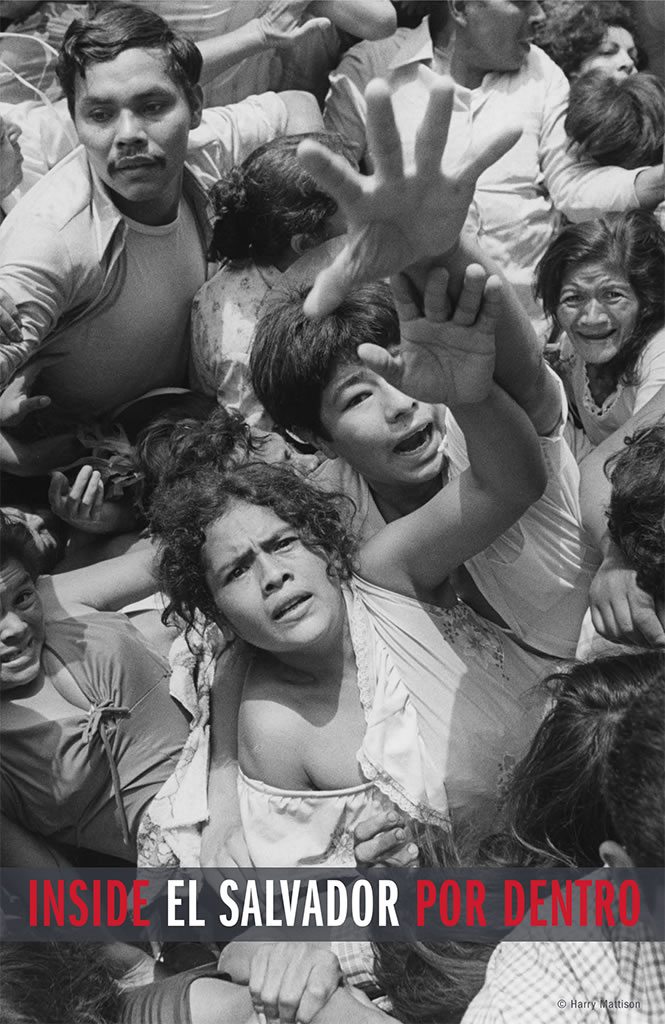Inside El Salvador
April 17, 2008 – August 3, 2008
The Harry Ransom Center at The University of Texas at Austin hosts "Inside El Salvador," a photography exhibition of more than 100 black-and-white images concerning the country's civil war and its aftermath.
After 50 years of military dictatorship in El Salvador, a coup d'etat in 1979 ignited a 12-year civil war that became notorious for assassinations, disappearances and death squads.
Christian-based communities, unions, student and popular organizations became targets for joining in opposition to the government, and civilian non-combatants were often caught in the crossfire between the military and the Farabundo Martí National Liberation Front (FMLN), an umbrella group of four guerrilla organizations and the Communist Party.
After UN-brokered peace accords were signed in 1992, about 80,000 people had been killed (most of them civilians) and as many as 1.5 million people had fled the country. While the peace accords ended the armed conflict, they did not directly address issues such as poverty, health, safety and education. The Salvadoran economy grew significantly in the decade following the war, but today the perpetuation of social ills has brought about a new kind of bloodshed: homicide rates are as high or higher than during the war and street gangs are widespread.
The first section of the exhibition is made up of 67 images taken by 30 international photojournalists during the intensely brutal period of conflict between 1979 and 1983. Photographers Susan Meiselas and Harry Mattison gathered these images into a traveling exhibition and book in 1983 to raise global awareness about the conflict.
At a time when the Reagan administration insisted that military aid to El Salvador's government was essential to stopping the spread of communism and that progress was being made on human rights, the photographs contributed to the debate by providing a contrary eyewitness account. The images are accompanied by texts written by poet Carolyn Forché.
Donations of the prints by the photographers and by the Marlene Nathan Meyerson Family Foundation to the Ransom Center benefited the Museo de la Palabra y la Imagen (Museum of the Word and Image) in San Salvador, a museum and archive dedicated to investigating, rescuing, preserving and presenting elements of the culture and history of El Salvador.
"This collection of photojournalism is a significant addition to our holdings at the Ransom Center," said David Coleman, Ransom Center curator of photography. "Because this group of images by a wide range of photographers focuses on a single episode in history, it offers valuable historical lessons on how war is covered, received and politicized in the mainstream media."
"Historic visual records, these photographs are vital eyewitness testament to the humanity and struggles of the Salvadoran people," added award-winning documentary photographer Donna DeCesare, an associate professor in the School of Journalism at The University of Texas at Austin. "They also serve as crucial reminders of past human rights abuses that continue to haunt us to this day."
The exhibition continues with images taken by DeCesare. This section, called "El Salvador Inside Out," begins by covering the end of the civil war, notably the murder of six Jesuit priests and the guerilla offensive in San Salvador in 1989—events that increased international pressure for the peace accords.
DeCesare's images then form two stories that trace the tragedy of youth violence from its origins in Los Angeles, where the Salvadoran immigrant community forms the second largest Salvadoran "city" in the world, back to El Salvador. The first story follows Jessica Diaz as she attempts to break the vicious circle of violence trapping her family. The second story follows Edgar Bolaños, whose mother sends him back to El Salvador, naively believing he will be safe from the world of gangs that killed his brother.
The Ransom Center's exhibition is in conjunction with "Image, Memory and the Paradox of Peace: Fifteen Years after the El Salvador Peace Accords," a conference hosted by The University of Texas at Austin's Rapoport Center for Human Rights and Justice, the Lozano Long Institute for Latin American Studies, the School of Journalism and the Rothko Chapel in Houston.
"Image, Memory and the Paradox of Peace: Fifteen Years after the El Salvador Peace Accords" will bring together academics, activists, artists and policy-makers on April 17 and 18 to discuss the Salvadoran civil war not merely as an episode of history, but also as a legacy whose effects—tangible and intangible—are obvious in the country today.


